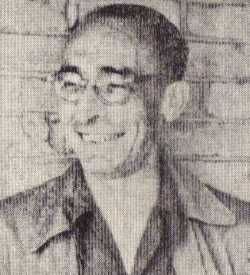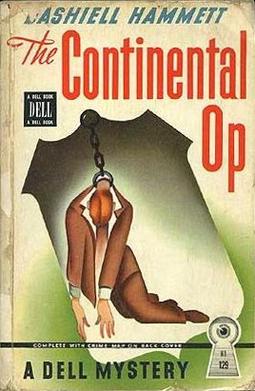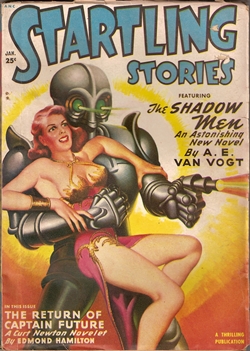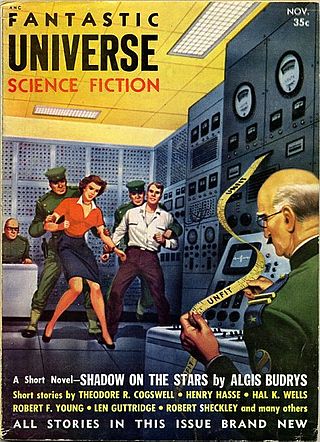
Edmond Moore Hamilton was an American writer of science fiction during the mid-twentieth century. He is known for writing most of the Captain Future stories.

Weird Tales is an American fantasy and horror fiction pulp magazine founded by J. C. Henneberger and J. M. Lansinger in late 1922. The first issue, dated March 1923, appeared on newsstands February 18. The first editor, Edwin Baird, printed early work by H. P. Lovecraft, Seabury Quinn, and Clark Ashton Smith, all of whom went on to be popular writers, but within a year, the magazine was in financial trouble. Henneberger sold his interest in the publisher, Rural Publishing Corporation, to Lansinger, and refinanced Weird Tales, with Farnsworth Wright as the new editor. The first issue to list Wright as editor was dated November 1924. The magazine was more successful under Wright, and despite occasional financial setbacks, it prospered over the next 15 years. Under Wright's control, the magazine lived up to its subtitle, "The Unique Magazine", and published a wide range of unusual fiction.

William Anthony Parker White, better known by his pen name Anthony Boucher, was an American author, critic, and editor who wrote several classic mystery novels, short stories, science fiction, and radio dramas. Between 1942 and 1947, he acted as reviewer of mostly mystery fiction for the San Francisco Chronicle. In addition to "Anthony Boucher", White also employed the pseudonym "H. H. Holmes", which was the pseudonym of a late-19th-century American serial killer; Boucher would also write light verse and sign it "Herman W. Mudgett".

The Continental Op is a fictional character created by Dashiell Hammett. He is a private investigator employed as an operative of the Continental Detective Agency's San Francisco office. The stories are all told in the first person and his name is never given.
Captain Future is a pulp science fiction hero – a space-traveling scientist and adventurer – originally published in the United States in his his namesake pulp magazine from 1940 to 1944. The character was created by editors Mort Weisinger and Leo Margulies. The majority of the stories were authored by Edmond Hamilton. A number of adaptations and derivative works followed.

Otis Adelbert Kline was an American songwriter, adventure novelist and literary agent during the pulp era. Much of his work first appeared in the magazine Weird Tales. Kline was an amateur orientalist and a student of Arabic, like his friend and sometime collaborator, E. Hoffmann Price.

Startling Stories was an American pulp science fiction magazine, published from 1939 to 1955 by publisher Ned Pines' Standard Magazines. It was initially edited by Mort Weisinger, who was also the editor of Thrilling Wonder Stories, Standard's other science fiction title. Startling ran a lead novel in every issue; the first was The Black Flame by Stanley G. Weinbaum. When Standard Magazines acquired Thrilling Wonder in 1936, it also gained the rights to stories published in that magazine's predecessor, Wonder Stories, and selections from this early material were reprinted in Startling as "Hall of Fame" stories. Under Weisinger the magazine focused on younger readers and, when Weisinger was replaced by Oscar J. Friend in 1941, the magazine became even more juvenile in focus, with clichéd cover art and letters answered by a "Sergeant Saturn". Friend was replaced by Sam Merwin Jr. in 1945, and Merwin was able to improve the quality of the fiction substantially, publishing Arthur C. Clarke's Against the Fall of Night, and several other well-received stories.

Wonder Stories was an early American science fiction magazine which was published under several titles from 1929 to 1955. It was founded by Hugo Gernsback in 1929 after he had lost control of his first science fiction magazine, Amazing Stories, when his media company Experimenter Publishing went bankrupt. Within a few months of the bankruptcy, Gernsback launched three new magazines: Air Wonder Stories, Science Wonder Stories, and Science Wonder Quarterly.

Ray Cummings was an American author of science fiction literature and comic books.
Leo Margulies was an American editor and publisher of science fiction and fantasy pulp magazines and paperback books.
Jove Books, formerly known as Pyramid Books, is an American paperback and eBook publishing imprint, founded as an independent paperback house in 1949 by Almat Magazine Publishers. The company was sold to the Walter Reade Organization in the late 1960s. It was acquired in 1974 by Harcourt Brace which renamed it to Jove in 1977 and continued the line as an imprint. In 1979, they sold it to The Putnam Berkley Group, which is now part of the Penguin Group.

Fantastic Universe was a U.S. science fiction magazine which began publishing in the 1950s. It ran for 69 issues, from June 1953 to March 1960, under two different publishers. It was part of the explosion of science fiction magazine publishing in the 1950s in the United States, and was moderately successful, outlasting almost all of its competitors. The main editors were Leo Margulies (1954–1956) and Hans Stefan Santesson (1956–1960).

The Call of the Savage (1935) is a Universal film serial based on the story Jan of the Jungle by Otis Adelbert Kline. It was directed by Lew Landers and released by Universal Pictures.

Satellite Science Fiction was an American science-fiction magazine published from October 1956 to April 1959 by Leo Margulies' Renown Publications. Initially, Satellite was digest-sized and ran a full-length novel in each issue with a handful of short stories accompanying it. The policy was intended to help it compete against paperbacks, which were taking a growing share of the market. Sam Merwin edited the first two issues; Margulies took over when Merwin left, and then hired Frank Belknap Long for the February 1959 issue. That issue saw the format change to letter size, in the hope that the magazine would be more prominent on newsstands. The experiment was a failure and Margulies closed the magazine when the sales figures came in.

Fantastic Novels was an American science fiction and fantasy pulp magazine published by the Munsey Company of New York from 1940 to 1941, and again by Popular Publications, also of New York, from 1948 to 1951. It was a companion to Famous Fantastic Mysteries. Like that magazine, it mostly reprinted science fiction and fantasy classics from earlier decades, such as novels by A. Merritt, George Allan England, and Victor Rousseau, though it occasionally published reprints of more recent work, such as Earth's Last Citadel, by Henry Kuttner and C. L. Moore.

Captain Future was a science fiction pulp magazine launched in 1940 by Better Publications, and edited initially by Mort Weisinger. It featured the adventures of Captain Future, a super-scientist whose real name was Curt Newton, in every issue. All but two of the novels in the magazine were written by Edmond Hamilton; the other two were by Joseph Samachson. The magazine also published other stories that had nothing to do with the title character, including Fredric Brown's first science fiction sale, "Not Yet the End". Captain Future published unabashed space opera, and was, in the words of science fiction historian Mike Ashley, "perhaps the most juvenile" of the science fiction pulps to appear in the early years of World War II. Wartime paper shortages eventually led to the magazine's cancellation: the last issue was dated Spring 1944.

The Planet of Peril, later republished as Planet of Peril, is a 1929 science fiction novel by Otis Adelbert Kline. Originally serialized in six parts in Argosy All-Story Weekly during the summer of 1929, it was published in hardcover later that year by A. C. McClurg and reissued in a lower-price edition by Grosset & Dunlap. It was revived in 1961 as an Avalon Books hardcover and saw its only mass market paperback edition from Ace Books in 1963. The later editions, well after Kline's death, were revised and shortened.
Norman Arthur Danberg, better known as Norman A. Daniels and other pen names, was an American writer working in pulp magazines, radio, and television. He created the pulp hero the Black Bat and wrote for such series as The Phantom Detective and The Shadow.

Wonder Story Annual was a science fiction pulp magazine which was launched in 1950 by Standard Magazines. It was created as a vehicle to reprint stories from early issues of Wonder Stories, Startling Stories, and Wonder Stories Quarterly, which were owned by the same publisher. It lasted for four issues, succumbing in 1953 to competition from the growing market for paperback science fiction. Reprinted stories included Twice in Time, by Manly Wade Wellman, and "The Brain-Stealers of Mars", by John W. Campbell.

My Best Science Fiction Story is an anthology of science fiction short stories edited by Leo Margulies and Oscar J. Friend. It was first published in hardcover by Merlin Press in November 1949, and reprinted in August 1950. An abridged paperback edition including twelve of its twenty-five stories was published by Pocket Books in July 1954 and reprinted in November 1955.















